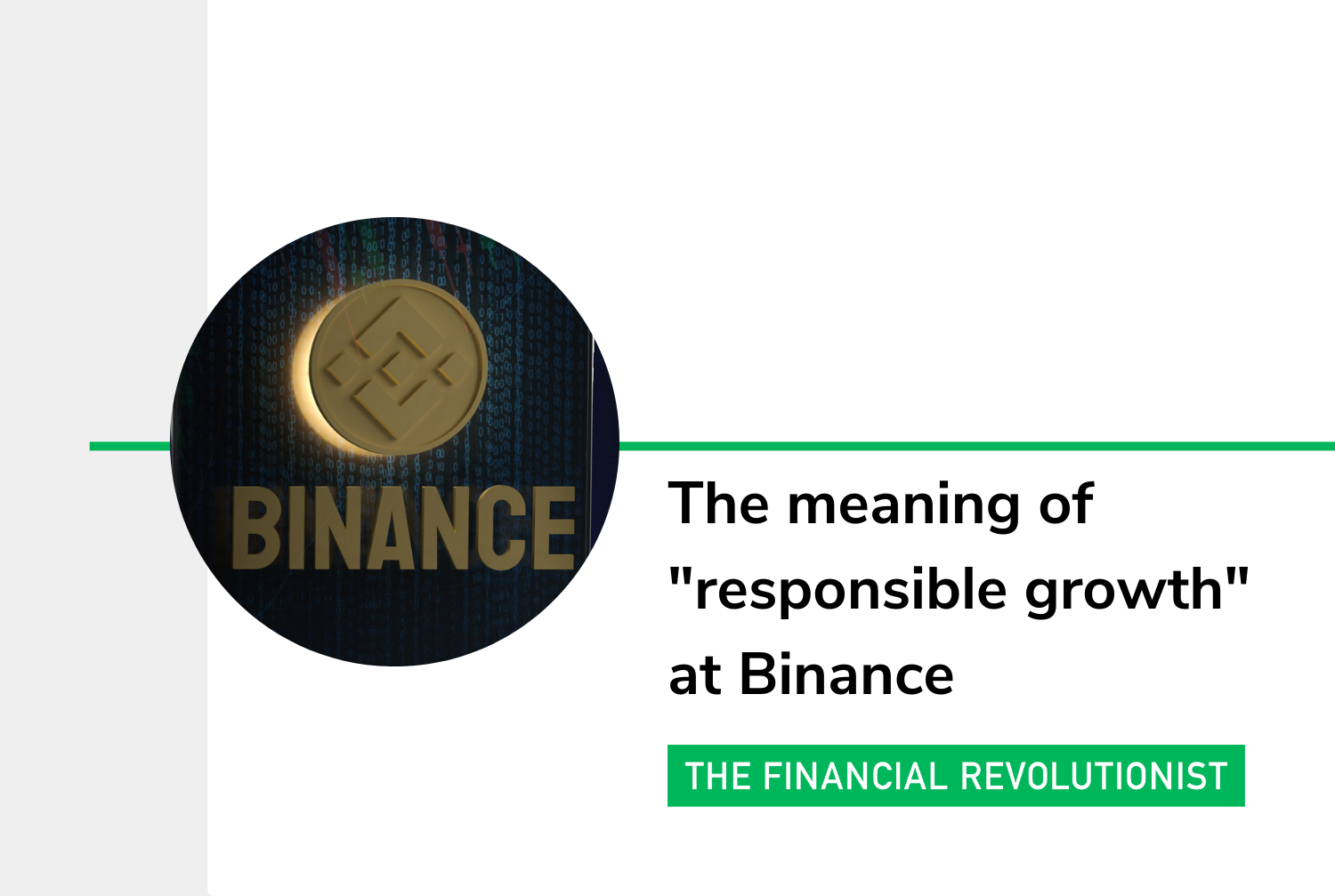The meaning of “responsible growth” at Binance
/Binance, the world’s largest currency exchange, has had a turbulent month. Most notably, the exchange agreed to a $4.3B fine following an investigation by the US Department of Justice—which US Treasury Secretary Janet Yellen cited as the largest enforcement action in the Treasury Department’s history.
Key to that deal was co-founder and former CEO Changpeng Zhao’s resignation from Binance, as well as his pleading guilty to violations of the US Bank Secrecy Act.
Government officials allege that Binance allowed more than 100,000 transactions related to terrorist activities, facilitated 1.5M trades in violation of US sanctions frameworks, and erected a warning system for VIP clients to notify them if they were under government investigation.
Richard Teng, previously Global Head of Regional Markets and Binance and a former regulator in Abu Dhabi and Singapore, has now stepped up to serve as Binance’s CEO.
"As we enter a new phase of Binance’s responsible growth, I welcome the opportunity to engage in meaningful conversations with global policymakers, ensure crypto investors remain confident in the future of the industry, and attract and cultivate the next billion users, in an effort to ensure the long-term sustainability of cryptocurrencies," Teng said in his first blog post since taking over as Chief Executive.
What “responsible growth” specifically entails is not fully known—but some details are beginning to emerge in the wake of the DOJ’s settlement with Binance.
Complete withdrawal
Perhaps most crucially, Binance will have to exit completely from US markets. Binance had previously claimed to have exited the United States in 2019, but continued to serve US-based users, effectively skirting the country’s AML and other compliance frameworks.
As part of the settlement, an independent party will confirm that Binance has exited from the US. This will mean any vestiges of Binance’s presence in the US will disappear. Existing ties between Binance and Binance.US, which was founded in 2019 in the wake of Binance’s in-name-alone withdrawal from the country, will most likely be severed as well. In this vein, Binance.US announced that Changpeng Zhao “decided to step down from his role as Chairman of our Board of Directors and transferred his voting rights through a proxy arrangement.”
It should be noted that Binance may have had to discontinue all of its operations as part of a less lenient settlement or ruling. Its ability to operate in other markets—as long as local regulators allow them—offers the exchange a massive, albeit whittled, lifeline.
Defining and wooing users
It’s unclear how many users specifically chose Binance because of its lack of AML and compliance efforts, not in spite of them. In the 24 hours following the DOJ’s action against Binance, the company saw more than $1B in virtual currency leave its system—a mix of disgruntled, compliance-focused users, as well as those who used digital currencies for extralegal or illegal purposes.
Teng’s rhetoric around “responsible growth” is no doubt an effort to retain existing—and, in the eyes of the law, legitimate—users. But shifts in language are far from enough. Binance may look to launch new blockchain-based products in the coming months, especially ones with unambiguous regulatory approval. This may include products resembling a spot Bitcoin ETF, which appears poised for a public launch (by other institutions) in early 2024 in the United States.
Bolstering compliance headcount
Binance will be holding its tail between its legs for the foreseeable future. Remaining in regulators’ crosshairs could be its death blow; building out its legal and regulatory teams, and generating a compliance-first culture, will be prerequisites for its survival.
From there, Binance can, as Teng suggested in his blog post, work with regulators on establishing a universal regulatory framework. But doing so prematurely could lead to a far greater exodus from the embattled exchange.






